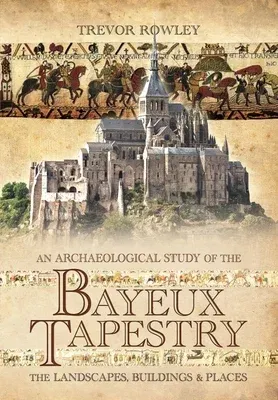Trevor Rowley
(Author)An Archaeological Study of the Bayeux Tapestry: The Landscapes, Buildings and PlacesPaperback, 14 December 2022

Qty
1
Turbo
Ships in 2 - 3 days
Only 4 left
Free Delivery
Cash on Delivery
15 Days
Free Returns
Secure Checkout

Print Length
224 pages
Language
English
Publisher
Pen and Sword Archaeology
Date Published
14 Dec 2022
ISBN-10
1526796694
ISBN-13
9781526796691
Description
Product Details
Author:
Book Format:
Paperback
Country of Origin:
GB
Date Published:
14 December 2022
Dimensions:
22.61 x
16 x
2.03 cm
ISBN-10:
1526796694
ISBN-13:
9781526796691
Language:
English
Pages:
224
Publisher:
Weight:
498.95 gm